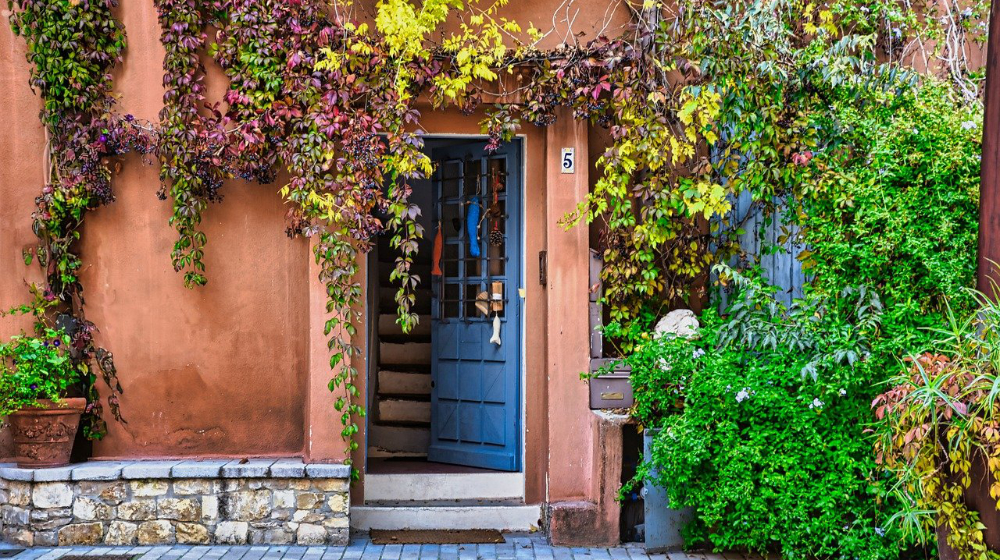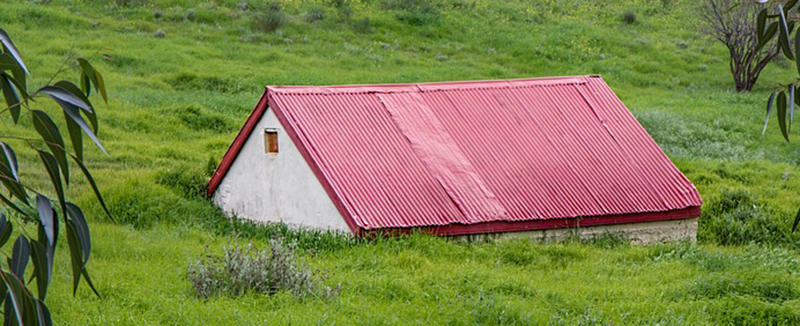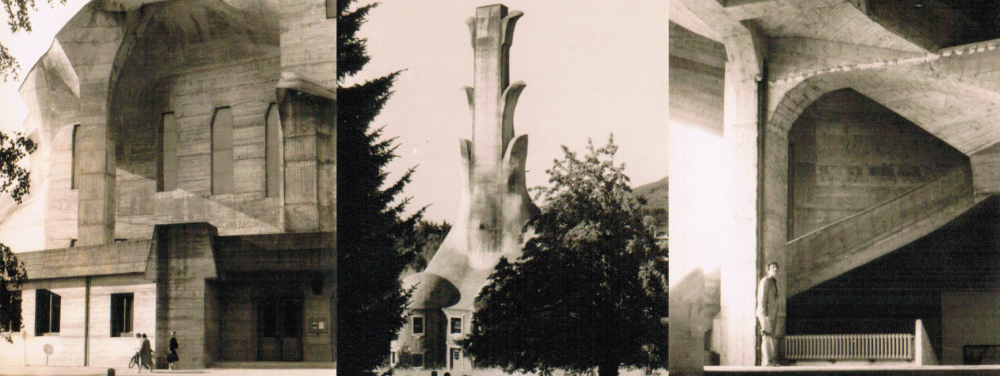Nature and buildings; terms, histories, theories and practice
[edit] Background
The influence of and reaction to nature and the natural world can be seen in many of the different architectural styles that have developed since humans first started to build shelters. The specific way in which nature and its biological systems influence, inspire, form, or interact with the built form has led to a number of different terms, philosophies, approaches, and styles of design, architecture, and engineering, some of which are described below.
[edit] Dominant influences
The influence and impact of the built environment and all its supply chains on the natural world and its systems are undeniable. This has led to a shift in terminology from the Holocene, or last 11,000 years, from the end of the last major glacial ice age to the current geological age, which is said to have started in the 1950's. That period saw a dramatic increase in human activity that started to affect the planet. The current geological epoch, the age of significant human influence, is often referred to as the Anthropocene (Crutzen & Stoermer 2000; Ellis 2018), a period when humans are the dominant influence on global climate and the environment.
[edit] Symbiotic relations
In around 2010, the Professor of Sustainability and environmental philosopher Glenn Albrecht coined the phrases solastalgia and symbiocene. Where nostalgia describes melancholia or homesickness through separation, solastalgia describes distress in people directly connected to their home but caused by environmental change. He argued that human history should enter a new era characterised by harmonious interactions between humans and nature in symbiosis. This term he coined as the next geological epoch. The symbiocene, is a period in Earth's history that sees the deep interconnectedness of all life on Earth, including humans.
The idea of design being symbiotic with nature is not new, but perhaps the specifics of the relationship between design, buildings, and nature have only more recently been studied in detail. Either way, a number of different terms, philosophies, approaches, and styles in both design and engineering have developed, some of which are outlined here in brief with links to further information. The list is extensive but not exhaustive, and many terms are interpretable and often debated to a greater or lesser extent with specifics in the details, such as bio-plastics, bio-solar, and so on. However, these terms do describe, to varying degrees, relationships between nature and design that perhaps involve borrowing ideas or taking inspiration from nature, leading to a search for perhaps a greater symbiosis between the two.
[edit] Differing terminologies
[edit] Arts and Crafts
The Arts and Crafts Movement developed in Britain in the mid-1800s, spreading globally and leading to the reformation of art at all levels across a wide social spectrum. Its basis lay in simple forms, the truth of materials, the consideration of nature as a source for patterns, and a celebration of the vernacular.
Two key figures in the movement were the theorist and critic John Ruskin and the designer, writer, and activist William Morris. Ruskin focused on the relationship between art, labour, and society, and Morris put Ruskin’s theories into practice, placing a high value on work, the pleasure derived from high-quality craftsmanship, the natural beauty of materials, and connection with the natural environment. The term Arts & Crafts itself was first used at the suggestion of the bookbinder T. J. Cobden-Sanderson for its offshoot, the Arts & Crafts Exhibition Society, which was set up in 1888. Early designs were often highly decorated, but plain and simple, showing a concern for and understanding of craftsmanship and inspiration from nature in pattern making, including calligraphy, typography, and book binding, as well as architecture.
The first Arts and Crafts building is considered to be the Red House, located in the countryside of Bexleyheath on what was then the outskirts of London when it was completed in 1860. It was also the first house designed by Philip Webb as an independent architect and artist with William Morris, who designed and built it for himself and his family to live in, display many of his designs, and test many of his ideas. The Arts and Crafts movement also had central ideas around society, work, and art, being one of the earliest movements in which women took a leading role as designers and makers as well as consumers, with schools opening in London, Glasgow, and Birmingham.
For more information, see Arts and craft movement
[edit] Biodesign
Bio-design is often a term more commonly associated to the field of medicine, and involves the implementation of inventions and interventions using biomedical technologies, there however are also wider uses and applications of the term. Biodesign, differs from for example biomimicry in that it seeks not only derive inspiration from and emulate natures products, but also looks to incorporate living or organic materials into the design of products, buildings and structures.
In the book and exhibition on the subject; BIODESIGN: Nature + Science + Creativity by William Myers, the contributing Paola Antonelli, Barbara Eldredge, Andrew Gardner, and Tony Cho describe Biodesign as the next step beyond biology-inspired approaches to design and fabrication. '...the incorporation of living organisms as essential components in design, enhancing the function of the finished work. Biodesign leaps ahead of imitation and mimicry to integration and use, dissolving boundaries and synthesising new hybrid objects and architecture... experiments replacing industrial or mechanical systems with a biological process, an approach becoming more important under the pressure of the climate crisis.'
For more information, see Biodesign.
[edit] Biophilic design
Biophilic design interprets and reacts to the philosophy of biophilia, which describes the tendency of humans to want to be near or interact with the natural environment. It is an approach used in building design, material selection, interior design, and urban planning, and more recently, it has also been referred to as nature-based solutions.
For more information, see Biophilic Design.
[edit] Biomimicry
Biomimicry is design that takes its inspiration from nature, in particular emulating natural solutions from an engineering perspective at all scales. It is the application of recognised biological concepts to fields that lie outside the discipline of biological science.
For more information, see Biomimicry.
[edit] Bio-inspired design
Bio-inspired design is a broader generalisation that considers mimicking nature’s forms as well as, more recently, processes in terms of scientific understanding, in particular how things function, which may or may not impact form. Elements found in the work of Gaudi are, for sure, inspired by nature, with organic forms that might also be considered biomimetic, organic, or even biomimetic architecture. Design and architectural styles such as art nouveau, Jugendstil, art deco, and others might be considered bio-inspired but not definitively, while elements and practitioners of modernism might also be considered under the same umbrella, depending on interpretation.
For more information, see Art Nouveau, Jugendstil, and Art Deco, as well as Antoni Gaudi.
[edit] Biomorphism
Biomorphism refers to design solutions that resemble different elements of life and nature visually. Bio-design is a term more common to the field of medicine, involving the implementation of inventions and interventions using biomedical technologies.
For more information, see: Biomorphism
[edit] Biophilia
Biophilia is a combination of bio, connected with life and living things, and the Greek philia, meaning a love of, thus meaning a deep love of or connection with living things or nature. Biophilic design is described as an architectural approach that seeks to connect the occupants of buildings more closely to nature; this is often achieved through natural light, natural ventilation, materiality, and the incorporation of landscape features into the design solution.
For more information, see: Biophilic design
[edit] Bionics
Bionics describes a science-and-design approach that combines natural biological systems with modern technology. It is an interdisciplinary field dealing with the structures, methods, and processes of biological systems that considers both formal and functional principles of design. Cybernetics refers more to the theory or science of communication and control that occurs in nature, animals, and machines; as such, it relates more to the art of governing or controlling automotive processes and communication.
[edit] Biobased
Biobased is a loose term that describes an organic material or product that contains, in whole or in part, biogenic (from biological sources) carbon. It refers to materials that derive from living matter and may be used interchangeably with 'biogenic', though the former may only describe the base material rather than the whole. Biomass refers to a material such as timber that, wholly, by mass, comes from living organisms, such as plants and animals.
Biomaterials, on the other hand, have come to have a specific meaning that relates to synthetic, bio-based, or natural biomaterials in contact with biological systems such as cells or tissues; these must be biocompatible.
For more information, see Biobased Materials and Types of Biobased Materials.
[edit] Bio-diverse
Biodiversity (or biological diversity) is the variety of life in the world or in a particular habitat or ecosystem. It includes species diversity, ecosystem diversity, and genetic diversity. In terms of building design and urban planning, it usually involves space for wildlife and green infrastructure within wider developments.
For more information, see Biodiversity and Biodiversity net gain and related terminologies explained.
[edit] Ecological design
Ecological design, also sometimes shortened to eco-design, which has come to be quite a generic term that may not refer to specific characteristics other than reducing general environmental impacts. Eco-logical, however, is derived from the combination of ecology (a branch of biology dealing with the relationship of organisms to one another and to their physical surroundings) and logical (according to the rules of logic, formal argument, or sound reasoning).
Ecological (eco-logical) design as such represents quite a specific sustainable approach; it was coined by Sim van der Ryn and Stewart Cowan in their 1996 book by the same name, where they argued for 'a seamless integration of human activities with natural processes to minimise destructive environmental impact.' These ideas were further developed in practice by William McDonough and Michael Braungart in their 2002 book about circularity in material use; From Cradle to Cradle (which has developed into the c2c certification standard). While connected and rooted in terms such as environmental design and sustainability, ecological design referred more to technical solutions towards integration as the logic of efficiency, optimisation, and evolutionary competition in environmental debates.
In her book History of Ecological Design (2018), Lydia Kallipoliti (Ana cycle) discusses the earlier origins of this integrated thinking, according to Ernst Haeckel’s definition in the field of ecology(Generelle Morphologie der Organismen, 1866) of an integral link between living organisms and their surroundings. She also refers to Henry David Thoreau, an American naturalist, essayist, poet, and philosopher who famously made a record and manual for self-reliance and living in proximity with natural surroundings by living in a cabin he built at Walden Pond, Massachusetts (Walden; or, Life in the Woods, 1854).
Lydia Kallipoliti argues that unlike van der Ryn and Cowan’s focus on a deep appreciation for nature’s equilibrium, ecological design might today start to commence with the synthetic replication of natural systems, perhaps bearing closer relationship to areas such as synthetic naturalism, biomorphism, bionics, and cybernetics.
[edit] Ecophilia
Ecophilia is a concept that describes the closeness and positive coexistence between human beings and nature. An ecophile, in turn, refers to someone who appreciates and enjoys the systemic relationships between organisms and their environments and may also be described as in love with nature.
[edit] Environmental design
Early environmental design focused on solar energy, orienting and designing buildings to maximise the benefit of solar access. It is said that around 500 BCE, ancient Greece had exhausted its supply of wood for fuel, which led to the design of environmentally oriented buildings to maximise localised energy. This in turn impacted how cities were built and can be seen in the east-to-west street grid patterns of ancient cities, leaving dwellings facing north to south.
In terms of modern design, early proponents of what might be considered environmental thinking and, in turn, design (or sometimes bio-inspired design) were the English Victorian writer, philosopher, and art critic John Ruskin and the designer associated with the Arts and Crafts movement, William Morris. Ruskin described his philosophy in the moral elements of Gothic, including a love of nature, inspiring Morris' deep connection with nature and the environment in his designs, and promoting handcraft over rapid mechanisation As such they are considered in many ways to have foreseen the environmental as well as social impacts the industrialisation revolution of the Victorian era had on humans and the environment.
Today, environmental design is quite a generic term that may incorporate design techniques such as solar orientation and natural ventilation but can extend to the wider impacts of the built environment, from the material used for construction to the fuels used to run the building and the way it is occupied. The term ecological design might be used more specifically to describe these wider considerations, to design buildings that give consideration to environmental impacts over a lifecycle. Similarly, the term sustainable or sustainable design might be used more holistically to describe these wider impacts, including environmental design to reduce impacts on the built environment. The term was more formally defined by the 1983 Brundtland Commission of the UN Commission on Environment and Development. Below is Bedzed a UK example of environmental design, making use of solar orientation with suns paces as well as a variety of other low impact design solutions and reduced embodied carbon in the materials used.
For more information, see Environmental design
[edit] Eutierria
Eutierria is a positive feeling of oneness with the earth and its life forces where the boundaries between self and the rest of nature are obliterated and a deep sense of peace and connectedness pervades consciousness” is a term coined by Australian philosopher and sustainability professor Glenn Albrecht in 2010.
[edit] Natural building
Natural building refers to buildings that are constructed primarily using natural materials, often sourced locally from the site, such as earth, clay, timber, cob, or straw. Such buildings may use less technology and rely on simple passive design solutions to achieve thermal comfort, perhaps incorporating some more technological renewable energy but also often including simple natural ventilation solutions, reed bed water systems, natural insulation, and earth burring. They sometimes have closer relationships with vernacular architecture, which historically would also have been self-made and constructed using local materials.
[edit] Nature-based solutions
Nature-based solutions were first used in the late 2000s (MacKinnon et al. 2008; Mittermeier et al. 2008) in the context of finding new solutions to mitigate and adapt to climate change effects while also protecting biodiversity and improving sustainable livelihoods. Related terms include, green infrastructure, blue infrastructure and green-blue infrastructure.
For more information, see Nature-based solutions
[edit] Organic architecture
Organic architecture is an architectural style and potentially a philosophy that promotes inspiration from and integration with natural surroundings to a greater or lesser degree. This style of architecture may or may not make use of organic forms, though it is likely to be considered to blend in with natural surroundings through interpretation, materiality, and form. The term was coined in the early 1900s by the American architect Frank Lloyd Wright, who was also associated with the Prairie style, and although his buildings might not be considered organic in form, he promoted a philosophy of organic architecture. Prior to this, the architect Louis H. Sullivan in the late 1800's promoted a philosophy of form following function, which was derived from his extensive studies of nature and the implementation of organic ornamentation.
An important figure associated with organic architecture is also the somewhat maverick critic, philosopher, social reformer, architect, esotericist, and natural scientist Rudolph Steiner. Best known today perhaps for the Steiner philosophy of education or Waldorf schools, and as the father of the biodynamic approach to agriculture, he also designed a number of buildings in the early 1900's and introduced his ideas around metamorphosis in architecture. An early example of dome timber architecture was the first Goetheanum he designed, which, due to fire, was redesigned and replaced by the second, concrete and organically formed, Goetheanum building, a cultural and spiritual centre for the arts.
It is a much debated term as it is also associated with other architects using higher-tech solutions, such as Frei Otto and Buckminster Fuller. In the early 2000s, David Pearson developed rules for organic architecture, known as the Gaia Charter, in his book The Breaking Wave: New Organic Architecture, in which he references a broad range of movements from Celtic design to Art Nouveau and the Arts and Crafts, as well as the work of Antoni Gaudí. Twenty years later, John Paull celebrated what he referred to as A Centenary for Organic Architecture in The First Goetheanum, referencing the work of Steiner (Journal of Fine Arts 2020). Today, the term is often associated more readily with organic forms, and although it does not specifically need to be interpreted in this literal sense, it often is.
For more information, see Organic architecture
[edit] Sustainable design
Sustainable design, or more generally, was defined as part of the World Commission on Environment and Development's 1987 Brundtland report, Our Common Future, as 'development that meets the needs of the present without compromising the ability of future generations to meet their own needs'. As such, it relates to a range of terms already described.
For more information, see also sustainable procurement, sustainable development or the sustainability of construction works.
[edit] Soliphilia
Soliphilia proposes a psychological interconnection with a place or bio-region, or a love of it, and this can instigate a feeling of personal responsibility and care for it. As a concept, it was created by sustainability professor Glenn Albrecht in 2003 as an antidote to another term he coined, solastalgia, which denotes distress caused by localised environmental changes.
[edit] Topophilia
The term topophilia was coined by the geographer Yi-Fu Tuan of the University of Wisconsin and is defined as the affective bond with one's environment, a person's mental, emotional, and cognitive ties to a place. It has come to be related not only to the environment in general but also to a strong sense of place, often mixed with a sense of cultural identity amongst certain people or certain aspects of a place.
--editor
[edit] Related articles on Designing Buildings
- Architectonics.
- Architectural styles.
- Bedzed.
- Biodiversity
- Biogenic carbon.
- Biologic carbon sequestration.
- Biomass.
- Carbon cycle.
- English architectural stylistic periods.
- Sustainability in building design and construction.
- The architectural profession.
- The sustainability of construction works.
- Traditional building.
- Types of rapidly renewable content
- Natural materials
- Urban design.
- What is design?
[edit] External references
Featured articles and news
OpenUSD possibilities: Look before you leap
Being ready for the OpenUSD solutions set to transform architecture and design.
Global Asbestos Awareness Week 2025
Highlighting the continuing threat to trades persons.
Retrofit of Buildings, a CIOB Technical Publication
Now available in Arabic and Chinese aswell as English.
The context, schemes, standards, roles and relevance of the Building Safety Act.
Retrofit 25 – What's Stopping Us?
Exhibition Opens at The Building Centre.
Types of work to existing buildings
A simple circular economy wiki breakdown with further links.
A threat to the creativity that makes London special.
How can digital twins boost profitability within construction?
The smart construction dashboard, as-built data and site changes forming an accurate digital twin.
Unlocking surplus public defence land and more to speed up the delivery of housing.
The Planning and Infrastructure Bill
An outline of the bill with a mix of reactions on potential impacts from IHBC, CIEEM, CIC, ACE and EIC.
Farnborough College Unveils its Half-house for Sustainable Construction Training.
Spring Statement 2025 with reactions from industry
Confirming previously announced funding, and welfare changes amid adjusted growth forecast.
Scottish Government responds to Grenfell report
As fund for unsafe cladding assessments is launched.
CLC and BSR process map for HRB approvals
One of the initial outputs of their weekly BSR meetings.
Building Safety Levy technical consultation response
Details of the planned levy now due in 2026.
Great British Energy install solar on school and NHS sites
200 schools and 200 NHS sites to get solar systems, as first project of the newly formed government initiative.
600 million for 60,000 more skilled construction workers
Announced by Treasury ahead of the Spring Statement.




































Comments
[edit] To make a comment about this article, or to suggest changes, click 'Add a comment' above. Separate your comments from any existing comments by inserting a horizontal line.